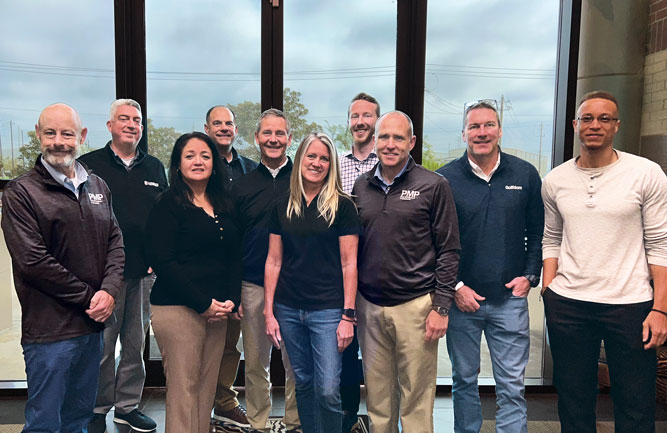The things that you miss in today’s digital world

Jim Moore
Superintendents have it made today. Now that I have made you mad let me explain myself. What I mean by this is that never before have superintendents had the ability to get help from so many others with such ease.
Before cell phones, social media, text messages and emails, most superintendents were on their own — effectively isolated from their peers. This was particularly true in towns with only one or two golf courses. Your connections consisted of a magazine or two once a month, a state conference (if your course could afford it) and visits from salespeople.
Again, if your course had the funds, you might have had a visit from the state turf Extension agent or the regional USGA agronomist. For most, getting help on solving problems was a matter of digging through textbooks and a lot of trial and error.
Power at your fingertips
I cannot overstate the power of digital connections. For example, the ability to post, “Are you seeing armyworms?” and receive answers in seconds is remarkable.
Equally extraordinary is the digital help in identifying weeds, insect pests and disease outbreaks. You can take a picture with a cell phone, post it to an app and wait a few seconds for others to chime in. This is so easy and commonplace it is easy to forget how hard it used to be.
To accomplish the picture identification scenario I just described when I was a superintendent: you had to break out your 35mm camera and make sure it had film; take the picture; wait days for the development of the film; hope that at least one of your pictures had proper exposure and focus; put the photograph in the mail and wait more days for it to get to the person you hoped could help you.
Another advantage of digital connections is the ability to easily talk to your peers and technical support. Consider how we used to do it. You would pick up the phone in your office, make an expensive long-distance call and hope the person you were trying to reach happened to be next to the phone in their office (good luck!)
Phone tag was inefficient and extremely aggravating.
Danger to digital
So yes, the many forms of digital connections have proven tremendously useful to today’s golf course superintendent. However, I believe there is a very real danger of becoming digitally isolated. There is real power and worth in many of the ways we did things in the old days.
Face-to-face interactions at conferences allowed for much more detailed and diversified conversations. They were also therapeutic in that you realized others faced the same challenges as you did. Magazine articles still provide help with the identification of problems and in-depth scientific analysis of why and how they occur.
As for those old dusty textbooks on your shelf? 99 percent of the information in them is still accurate. Nothing can help you understand complex problems better than a couple of hours of quiet reading and study of agronomic principles.
Finally, in my opinion, the most valuable communication tool at your disposal is not digital — it’s personal. Make the time to visit with salespersons and tap into what they see as they travel the region.
Periodically invite one or more of your trusted peers to visit your course and ask them for an honest evaluation of what you can do better. If you can’t afford to implement a suggestion, it should go into a long-range plan for the future.
Return the favor by being willing to visit other courses and superintendents in your area. An hour or two riding the course and having lunch together will do more than 100 text messages. And in addition to gathering valuable information regarding how to manage a golf course, you might very well make a friend for life.
That’s something you can’t do with an emoji.










